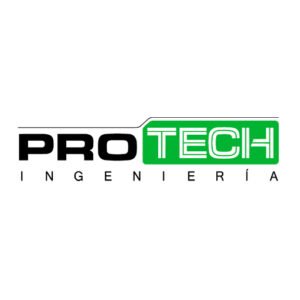In the current context of digitization, companies face unprecedented challenges regarding the handling and management of information. Digitization has ceased to be a mere trend and has become a strategic necessity that allows organizations to remain relevant and competitive in their respective industries. In this new landscape, document management has undergone a significant transformation toward electronic administration, incorporating modern solutions and methodologies that optimize both document control and information management. This content analyzes how the digitization process is revolutionizing document administration and offers a detailed study of its advantages and potential challenges.
One of the pillars of this digital revolution is the adoption of emerging technologies that facilitate the automation and improvement of various organizational processes. Tools such as artificial intelligence, big data analytics, and the Internet of Things (IoT) enable companies to operate more efficiently. These technological resources not only reduce operational costs but also enhance service levels, contributing to a more satisfying customer experience and more accurate information management.
The Role of Document Management in the Digital Environment
Document management encompasses the tasks of capturing, storing, locating, and distributing both documents and structured information. In the digital realm, these activities are carried out through specialized computer systems that not only enable faster access to data but also ensure information security in compliance with established laws and regulations. This transformation has strengthened information management, making it more efficient, organized, and reliable.
This type of management is essential for the operational stability of companies. Efficient document administration provides organizations with the ability to:
- Reduce risks: By protecting information to ensure its availability and integrity.
- Improve internal procedures: By reducing the time it takes to locate and use necessary data.
- Increase user satisfaction: By delivering timely and accurate responses.
In addition, proper document management ensures compliance with legal regulations, which is critical in highly regulated sectors such as healthcare, finance, and education. Therefore, investing in technological tools that enhance document management and information handling is not optional — it's essential.
The Relevance of Digitization in the Business World
Digital transformation is an essential component for modern companies. It not only drives improvements in process efficiency but also fosters innovation and adaptability in ever-changing environments. Businesses that embrace digitization are able to deliver better customer experiences, make more informed decisions through data analysis, and respond more swiftly to new challenges—ultimately strengthening their information management in a more effective and strategic way.
Advanced Technologies for Effective Document Management
Digital solutions applied to document management have advanced significantly, incorporating technological innovations that enable work in digital environments to be more agile and secure. Among the most prominent tools are:
- Document Management Systems (DMS): Digital platforms used to classify, store, and access electronic documents quickly and with control.
- Workflow Automation: Tools that enable the standardization and automation of tasks such as document creation, review, and approval.
- OCR Technology (Optical Character Recognition): Systems that convert scanned files into editable text, making them easier to search and analyze.
- Cloud Services: Digital spaces that allow documents to be stored and shared from any device, fostering remote collaboration and improved information management within the organization.
Each of these solutions contributes significantly to transforming the way documents are managed within companies, creating more organized, efficient, and modern environments.
-
Document Management Systems (DMS)
Digital platforms used to classify, store, and access electronic documents quickly and with control.
-
Workflow Automation
Tools that enable the standardization and automation of tasks such as document creation, review, and approval.
-
OCR Technology (Optical Character Recognition)
Systems that convert scanned files into editable text, making them easier to search and analyze.
-
Cloud Services
Digital spaces that allow documents to be stored and shared from any device, fostering remote collaboration and improved business information management.
Advantages of Implementing Electronic Document Management
1. Increased Workplace Productivity
One of the most tangible benefits of digital document management is the substantial boost in productivity. Implementing a well-structured system reduces the time spent searching for information, optimizing the use of working hours. This allows teams to focus on strategic tasks rather than routine operations.
The automation of processes also enables better control of workflows, speeding up response times and reducing human errors that can negatively impact the organization financially. This has a positive effect on information management, making it more accurate and accessible for decision-making.
2. Information Security and Regulatory Compliance
A key aspect of digitizing document management is data protection. Digitizing physical documents and implementing robust systems for their storage and retrieval helps prevent loss or unauthorized access. Technologies such as encryption, audits, and access controls strengthen this security.
Additionally, compliance with legal regulations becomes more achievable through digital document management. These platforms can be configured to perform automatic backups and maintain detailed records of who accesses which documents. This enables companies to meet both local and international legal requirements, reinforces their credibility with third parties, and supports information management that aligns with the highest quality standards.
Steps to Develop an Effective Document Management Strategy
Needs Assessment
Before transitioning to digital document management, it is essential to identify the organization’s specific needs. This includes recognizing the types of documents handled, how they are currently processed, and where issues arise. Clarity in this assessment is crucial for designing a solid information management strategy.
Choosing the Right Technologies
Selecting the appropriate tools is vital for a successful implementation. This includes choosing a document management system, automation solutions, and cloud platforms that align with the organization’s internal processes.
Staff Training and Change Management
To ensure a smooth adoption of these new tools, it is essential to train employees. Training should focus not only on how to use the systems but also on understanding the new work methods. This cultural shift is key to achieving more agile and results-driven information management.

Recommendations for Efficient Document Management
Define Institutional Policies
Having clear guidelines on how to manage documents ensures that all members of the organization work consistently. This includes directives on document creation, filing, access, and disposal, forming the foundation for effective information management.
Perform Regular Review and Monitoring
Promoting a proactive attitude toward digital transformation within the company is crucial. It's important to encourage employees to adopt new technologies and demonstrate the tangible benefits of working in digital environments. This helps strengthen a company culture focused on effective information management.
Perform Regular Review and Monitoring
Promoting a proactive attitude toward digital transformation within the company is essential. It's important to motivate employees to adopt new technologies and show them the tangible benefits of working in digital environments. This helps strengthen a corporate culture centered on effective information management.
4 Fundamental Pillars of Digital Document Management
-
1. Document Digitization and Capture
This phase involves converting physical documents into digital formats and uploading digital files directly into the document management system. It is the first step toward ensuring comprehensive document control and proper information management.
-
2. Organization and Storage
Proper classification and storage of digital files enable efficient searching. This includes using tags, metadata, and a coherent folder or repository structure.
-
3. Information Access and Retrieval
One of the main advantages of the digital environment is quick access to documents. Thanks to powerful search systems, precise information can be located in seconds, greatly enhancing information management.
-
4. Data Protection and Legal Compliance
Keeping documents secure and ensuring compliance with all regulations is essential. This is achieved through security policies, regular audits, and the use of encryption and access control mechanisms.
The Future of Document Management in Digital Transformation
Emerging Technological Directions
As digitization continues to advance, document management will also keep evolving. Some of the key trends shaping the future include:
- Integration of AI: To automatically classify documents and facilitate their retrieval.
- Technological Synergies: Such as the use of blockchain technology, which can ensure the authenticity of digital files.
- Mobility: The growing demand for mobile access will drive the adoption of even more flexible cloud-based solutions, optimizing information management from any device.
Successful Case Studies in Document Digitization
Organizations That Have Transformed Their Document Management
Various companies have completely modernized their document management by adopting digital solutions. These transformations have led to reduced operational costs and significantly increased efficiency, while also improving the overall quality of information management.
Positive Impacts and Lessons Learned
Among the key benefits achieved are improved productivity, reduced errors, and stronger information protection. The most valuable lessons include the importance of meticulous planning, selecting the right technological tools, and providing ongoing staff training to achieve smarter and more secure information management.
Lead Your Digital Transformation Now!
Adopt advanced document management solutions and optimize information management in your company.
Contact Us Now!
Discover how to modernize your processes with efficiency, security, and regulatory compliance.








